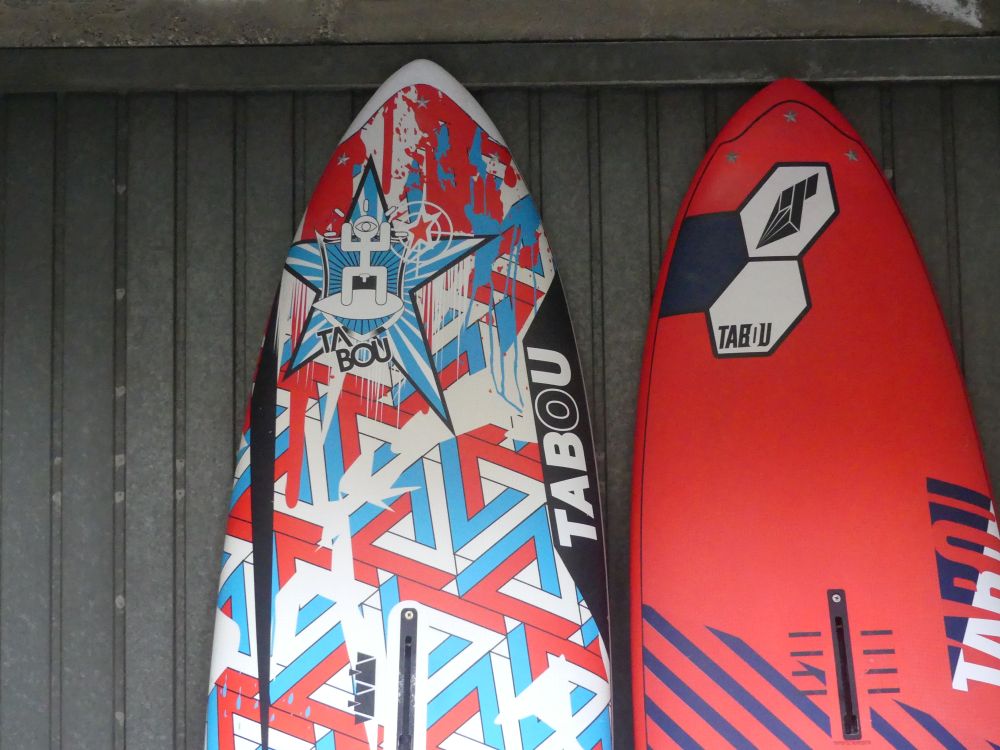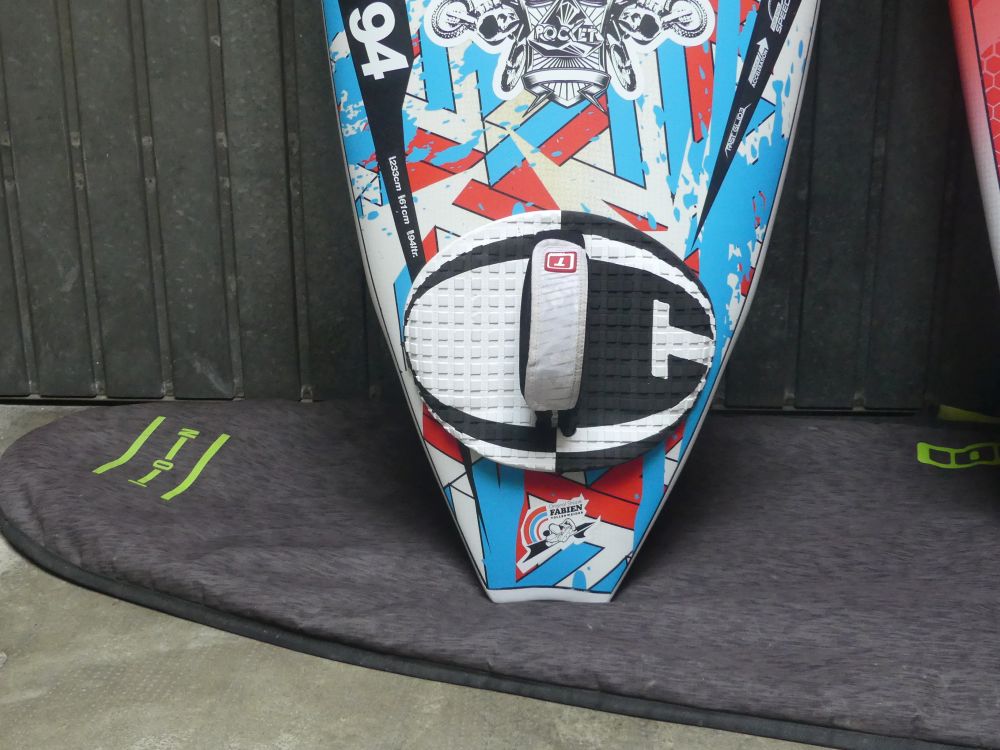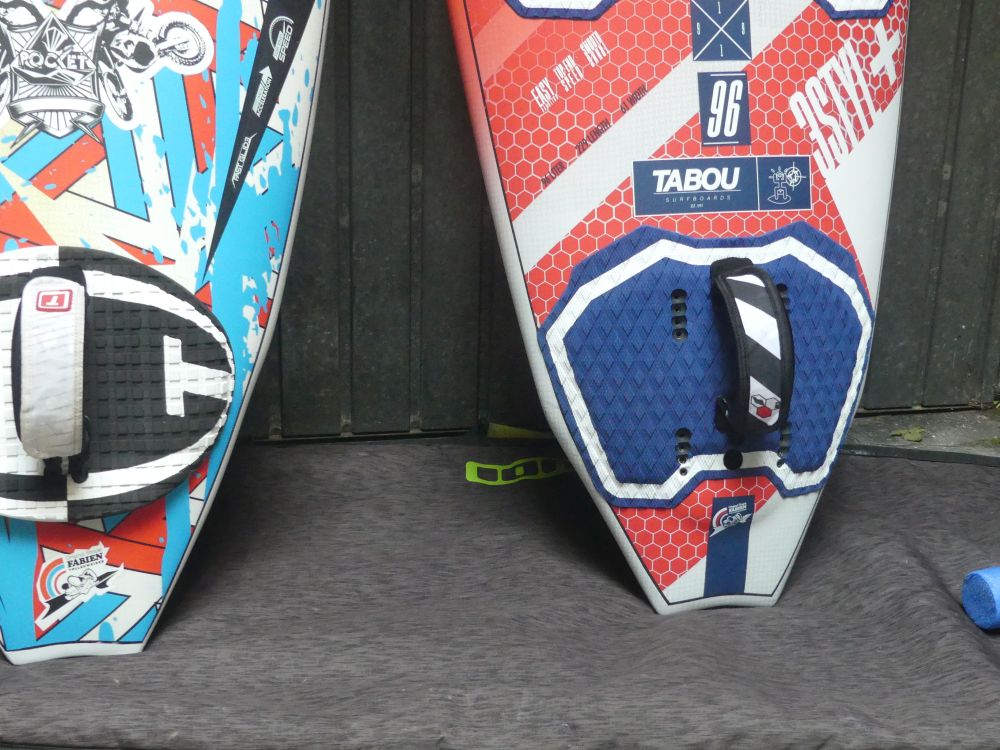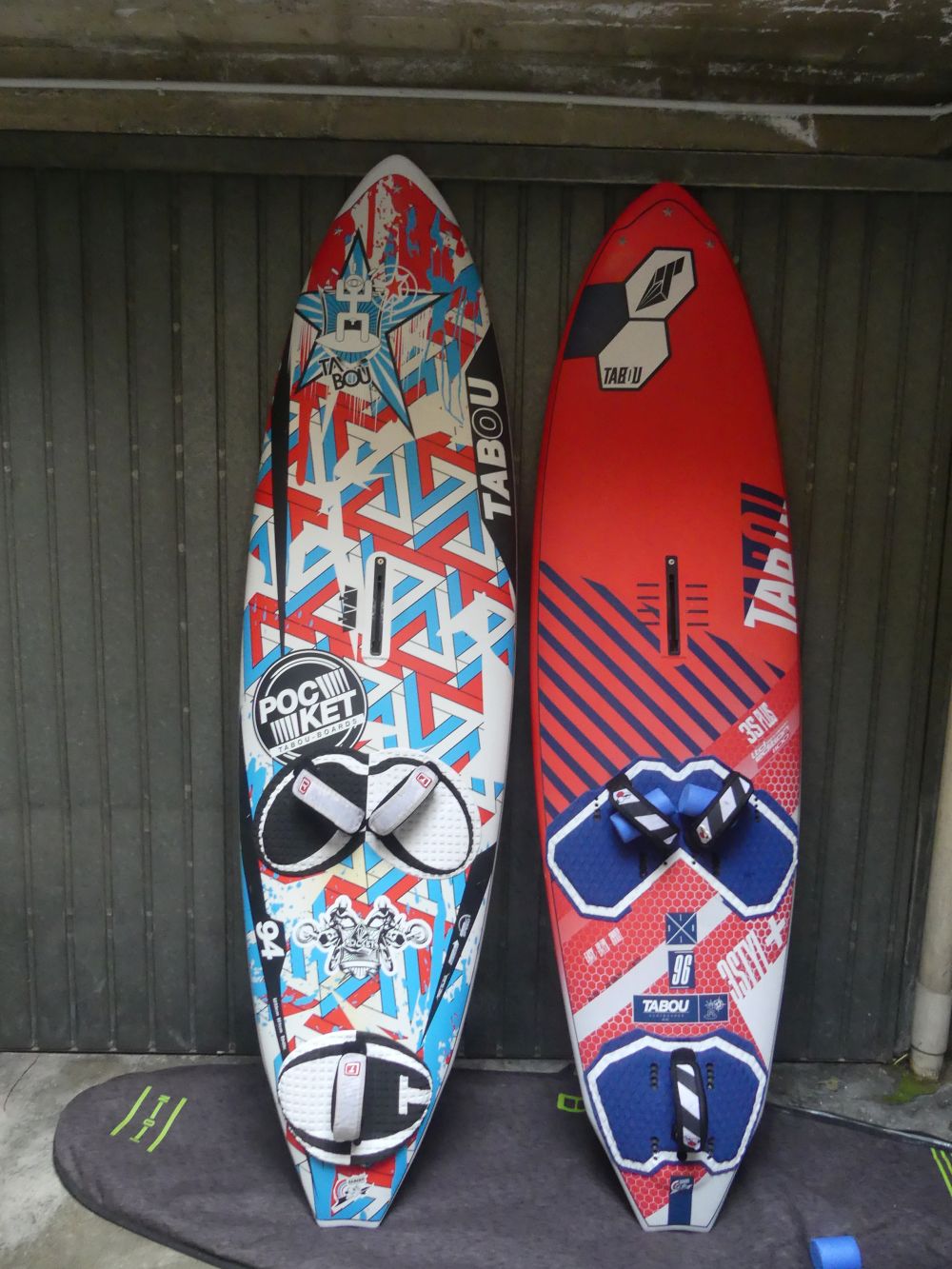In this article, we compare the shape and performances of the Tabou Pocket 94 2016 (a wave board) and the Tabou 3S Plus 96 LTD 2019 (famous freewave model of the French windsurfing board brand).
Windsurfing, boards review: Tabou Pocket 94 vs 3S PLUS 96 LTD. Wave vs freewave
I recently bought a Tabou 3S Plus 96 LTD (from 2019), with the idea of replacing, with this board, both my Tabou 3S 106 2015 and my Tabou Pocket 94 2016 ( read the test of this board ), to manage windsurfing sessions with wind ranging from 14-15 to 25-30 knots, in freeride, bump and jump, or waveriding conditions with small waves. I don't know if I will succeed in this goal. I will integrate this article after having done a fair number of sessions with the 3S Plus.
But the occasion is very interesting, anyway, to compare two boards with similar volume (94 and 96), but with rather different shapes: wave, for the Pocket, freestylewave for the 3S. Read also the article on the different shapes of windsurf boards.
Comparison of board shapes
The Tabou Pocket is a little longer (233 instead of 229 cm) than the 3S plus 96 2019. The two boards, on the other hand, have the same width (61 cm). But these two data alone are not enough to understand the design of the boards, and to understand their performances.
The rear part of the Pocket starts to get narrower first, shortly after the center of the board (see photo in this article), and then tapers almost at the tail (swallow for both boards). The rear side of the 3S Plus, on the other hand, maintains a greater width towards the tail (to facilitate planing), and then sharply tapers.



Central part temporarily omitted. Full article available in preview only to Supporters of Waterwind.it. To become a Supporter, click here.
As mentioned, the bow of the 3S sinks a little more easily, even if by bringing the body weight back to the center of the board, the bow comes out of the water easily. You have to be careful, with gusty wind, because the board tends to go into catapult, if you maintain a too advanced body stance. This peculiarity, however, could help in setting the speed loop or forward. To get the board into planing, you need to bear away a little and quickly move your body a little back, pushing with the front leg. It should be highlighted, however, that, with good quality wind, with an efficient fin, and if the coupled sail is of adequate size, the board gets planing very quickly. With 15-16 knots of wind, I tried the board in single fin trim, with an MFC K-One 27 fin (fantastic fin), and with an Ezzy Wave 5.8 2021 sail (another excellent product). It was an almost mystical experience.
Once on planing, the Tabou 3s Plus LTD offers wonderful sensations: it is very fast, and flies with the bow high on the water, perfectly managing the chop. It easily overcomes wind drops, maintaining planing in a rather stable way.
When manoeuvring (when planing), the board guarantees a truly remarkable momentum in fast tacks, and supports the weight of the body in Power jibe, even if you forget a bit to maintain an advanced stance. Even in Power Jibe, the board keeps speed and planing for a long time. In a nutshell, the mix of freestyle shape in the back and wave shape in the front part of the hull creates a perfect balance, giving this board a real freewave soul.
The Pocket's planing entry has always been a notable strong point of this model. It is lightning-fast, and, with a single fin trim, immediate even abeam. I used it very effectively with a single MFC freewave 23 central fin. The momentum when tacking is decidedly lower than the 3S, and also the planing retention in Power jibe is good, but not at the level of the 3S. The longer nose of the Pocket requires a little more attention from the rider to control the board in the air.
As mentioned, the bow of the 3S sinks more easily, even if you position your weight backwards to the center of the board, the bow comes out of the water easily. Even when planing, the board requires a further back stance than the Pocket. It is therefore advisable to position the front straps further back than in the Pocket. This behaviour can disorient some riders in the first outings. You have to be careful, with gusty winds, because the board tends to go into the catapult, if you maintain an advanced stance. This peculiarity, however, could help in trying the speed loop or forward.
The Pocket planing entry has always been a notable strong point of this model. It is lightning-fast, and, with a single fin set up, quite quick even when sailing abeam. I used it very effectively with a single 23 MFC freewave center fin.
Both boards turn very well, the Pocket turns with a slightly tighter turning radius, more so when used as a trifin with relatively advanced fins. I used it very effectively even in small waves conditions with a set of K4 fins.
What do you think? Which board would you keep? Have your say below in the comments to the article (for subscribed users only).
Aloha. Fabio
Without your Support, Waterwind wouldn't exist. Become our supporter!
If you want to advertise with us, read here, or contact us.
Collaborate with us. Read here!
Buy our Gadgets! Visit our YouTube channel!




